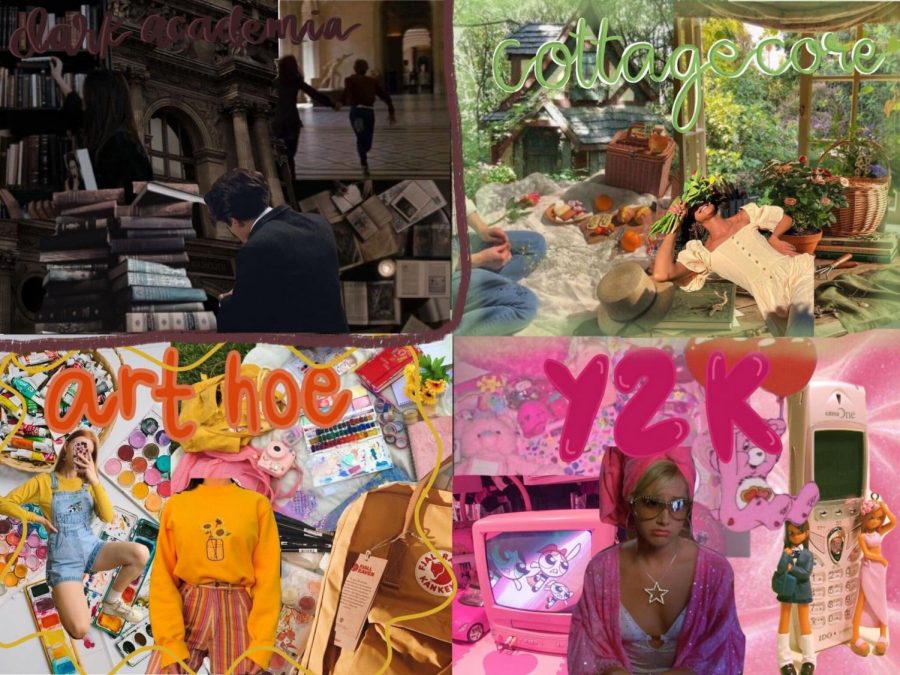The Toxicity of Aesthetics
January 18, 2021
Aesthetics are commonly defined as the groupings of different forms of nature, beauty and art into specific categories. They are supposed to be beneficial, serving as a collection of things that you like, but have recently become anything but, acting more like a rule book to who you should be over anything else.
To name all of the many types of aesthetics would take forever, as there is quite literally an aesthetic for everything. A few of them, however, have become exemplary over this past year, and are modeling the dream lifestyles for many individuals, especially amongst teens. These common aesthetics normally include Y2K, Dark/Light Academia and Cottagecore.
Focused solely on the 2000s, the Y2K aesthetic consists of a colorful, turn of the Millenium style that is embodied in almost all the most well known chick flicks. Dark/Light Academia however, expresses Greek and Gothic architecture romanticizing higher education as well as literature. Cottagecore basically exemplifies the title, featuring a rural, green way of living in an antique style cottage.
If you were to search any of these aesthetics online, you’ll see a collection of photos ranging from nature to clothing embodying that certain appeal. All in all it seems great, and there’s truly nothing wrong with finding an aesthetic that originates with the things you like, but the potential of its harm shouldn’t be ignored.
Most of this toxicity stems from its source– the internet. If you ever were to look up these aesthetics online, especially on apps like Pinterest or We Heart It, you’ll notice a pattern. Unfortunately, it’ll easily come to your attention that all of the individuals wearing clothes of that aesthetic or being in an environment correlating with it, are all very skinny and and very very white.
“When I look up an aesthetic I like the first thing that usually comes up is a white, skinny, blonde/brunette girl. It disheartens me a little because when I look up something I find interesting and see images like this it makes me feel like I’m not allowed to participate in that,” said junior, Varshitha Selvarajanuma.
Henceforth, it is imprinted into our minds that In order to like certain things you also have to look a certain way, which is nonetheless disheartening and couldn’t be farther from the truth
Not only are aesthetics visually exclusive, but they can also encourage the idea of changing yourself to fit a certain aesthetic’s mold. Dark Academia, for example, is known to embody moodiness both in behavior and music taste. Evidently, people who like this aesthetic will also try to personify this behavior and its ideals, but there’s a difference between being inspired by something and changing your entire personality to be someone you’re not.
The latter, being changing yourself to fit a certain aesthetic, is unfortunately the norm. Once you start liking a specific ideal, branching out to enjoy anything outside of it, whether it be a music genre or clothing style, can feel taboo.
“I’ve seen a lot of people feel the pressure of social media, categorizing themselves in order to fit in with one specific group,” said junior Delaney Aguilar.
Now more than ever, considering all this time spent online, the dangers of becoming restricted by an aesthetic are heightened, so it’s important to be mindful of their risky narrative.
Living by a category is no way to spend your life, so when searching for a certain aesthetic, remember their purpose, using them as a way to heighten and encourage your own personality rather than to change it completely.


